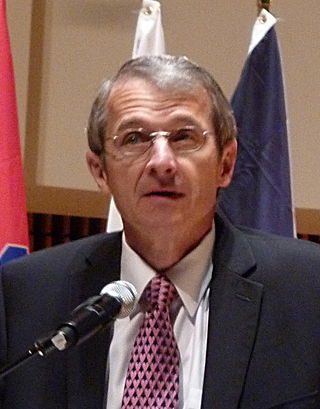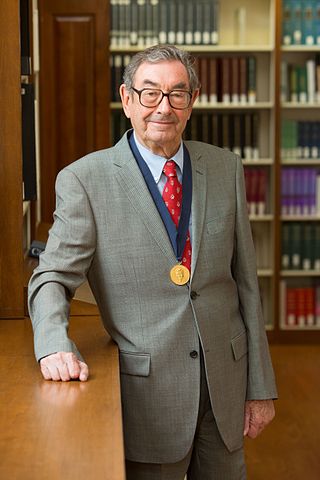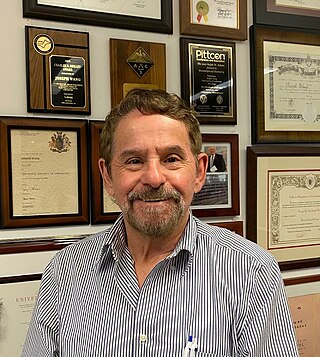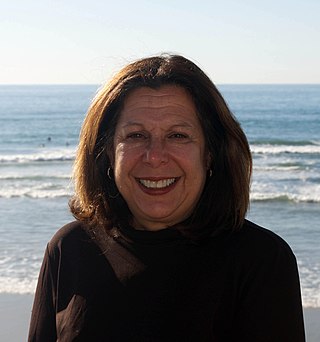
Jacqueline K. Barton, is an American chemist. She worked as a professor of chemistry at Hunter College (1980–82), and at Columbia University (1983–89) before joining the California Institute of Technology. In 1997 she became the Arthur and Marian Hanisch Memorial Professor of Chemistry and from 2009 to 2019, the Norman Davidson Leadership Chair of the Division of Chemistry and Chemical Engineering at Caltech. She currently is the John G. Kirkwood and Arthur A. Noyes Professor of Chemistry, Emerita.

Richard Royce Schrock is an American chemist and Nobel laureate recognized for his contributions to the olefin metathesis reaction used in organic chemistry.
Tobin Jay Marks is an inorganic chemistry Professor, the Vladimir N. Ipatieff Professor of Catalytic Chemistry, Professor of Material Science and Engineering, Professor of Chemical and Biological Engineering, and Professor of Applied Physics at Northwestern University in Evanston, Illinois. Among the themes of his research are synthetic organo-f-element and early-transition metal organometallic chemistry, polymer chemistry, materials chemistry, homogeneous and heterogeneous catalysis, molecule-based photonic materials, superconductivity, metal-organic chemical vapor deposition, and biological aspects of transition metal chemistry.
James Andrew McCammon is an American physical chemist known for his application of principles and methods from theoretical and computational chemistry to biological systems. A professor at the University of California, San Diego, McCammon's research focuses on the theoretical aspects of biomolecular and cellular activity. In 2011 he was elected to the National Academy of Sciences.
Naresh Dalal is a physical chemist who specializes in materials science. He is the Dirac Professor of Chemistry and Biochemistry at Florida State University, where he is affiliated with the National High Magnetic Field Laboratory.

Harry Barkus Gray is the Arnold O. Beckman Professor of Chemistry at California Institute of Technology.

Joseph Wang is an American biomedical engineer and inventor. He is a Distinguished Professor, SAIC Endowed Chair, and former Chair of the Department of Nanoengineering at the University of California, San Diego, who specialized in nanomachines, biosensors, nano-bioelectronics, wearable devices, and electrochemistry. He also serves as the Director of the UCSD Center for Wearable Sensors and as the co-director of the UCSD Center for Mobile Health Systems and Applications (CMSA).
Richard B. Kaner is an American synthetic inorganic chemist. He is a distinguished professor and the Dr. Myung Ki Hong Endowed Chair in Materials Innovation at the University of California, Los Angeles, where he holds a joint appointment in the Department of Chemistry and Biochemistry and the Department of Material Science and Engineering. Kaner conducts research on conductive polymers (polyaniline), superhard materials and carbon compounds, such as fullerenes and graphene.

Peter Guy Wolynes is an American theoretical chemist and physicist. Since 2011 he has been a Bullard-Welch Foundation Professor of Science and professor of chemistry at Rice University. He is widely recognized for his significant contributions to the theories of protein folding, glasses, and gene networks. Previously he was James R. Eiszner Professor at the University of Illinois at Urbana-Champaign, and the Francis H.C. Crick Chair of Physical Sciences at the University of California, San Diego.
Lu Jeu Sham is an American physicist. He is best known for his work with Walter Kohn on the Kohn–Sham equations.

Debbie C. Crans is a Professor of Organic, Inorganic and Biological Chemistry and of Cell and Molecular Biology at Colorado State University, where she also is a Professor Laureate of the College of Natural Sciences. Crans specializes in the fundamental chemistry and biochemistry of drugs, with particular focus on vanadium and other transition metal ions as metals in medicine and investigation of their mechanisms of toxicity.
T. Don Tilley is a professor of chemistry at the University of California, Berkeley.

Vicki H. Grassian is a distinguished professor in the department of chemistry and biochemistry at the University of California, San Diego. She also holds the distinguished chair in physical chemistry.
Alison Butler is a Distinguished Professor in the Department of Chemistry and Biochemistry at the University of California, Santa Barbara. She works on bioinorganic chemistry and metallobiochemistry. She is a Fellow of the American Association for the Advancement of Science (1997), the American Chemical Society (2012), the American Academy of Arts and Sciences (2019), and the Royal Society of Chemistry (2019). She was elected a member of the National Academy of Sciences in 2022.
Kimberly A. Prather is an American atmospheric chemist. She is a distinguished chair in atmospheric chemistry and a distinguished professor at the Scripps Institution of Oceanography and department of chemistry and biochemistry at UC San Diego. Her work focuses on how humans are influencing the atmosphere and climate. In 2019, she was elected a member of the National Academy of Engineering for technologies that transformed understanding of aerosols and their impacts on air quality, climate, and human health. In 2020, she was elected as a member of the National Academy of Sciences. She is also an elected Fellow of the American Philosophical Society, American Geophysical Union, the American Association for the Advancement of Science, American Philosophical Society, and the American Academy of Arts and Sciences.
Christine "Christy" Chow is a professor of chemistry and former associate dean of the College of Liberal Arts and Sciences at Wayne State University. She works on modified RNAs, RNA-ligand interactions and RNA therapeutics. She is a Fellow of the American Chemical Society (ACS).
Jin Zhang is a Chinese-American biochemist. She is a professor of pharmacology, chemistry and biochemistry, and biomedical engineering at the University of California, San Diego.
M. G. Finn is an American chemist and professor at the Georgia Institute of Technology.

Neal K. Devaraj is an American chemist and professor at the University of California, San Diego (UCSD). His research interests include artificial cells, lipid membranes, and bioconjugation.
Louis Antoinette Berben is an Australian American chemist who is Professor of Inorganic Chemistry at the University of California, Davis. She was awarded the 2024 American Chemical Society Award in Organometallic Chemistry.








